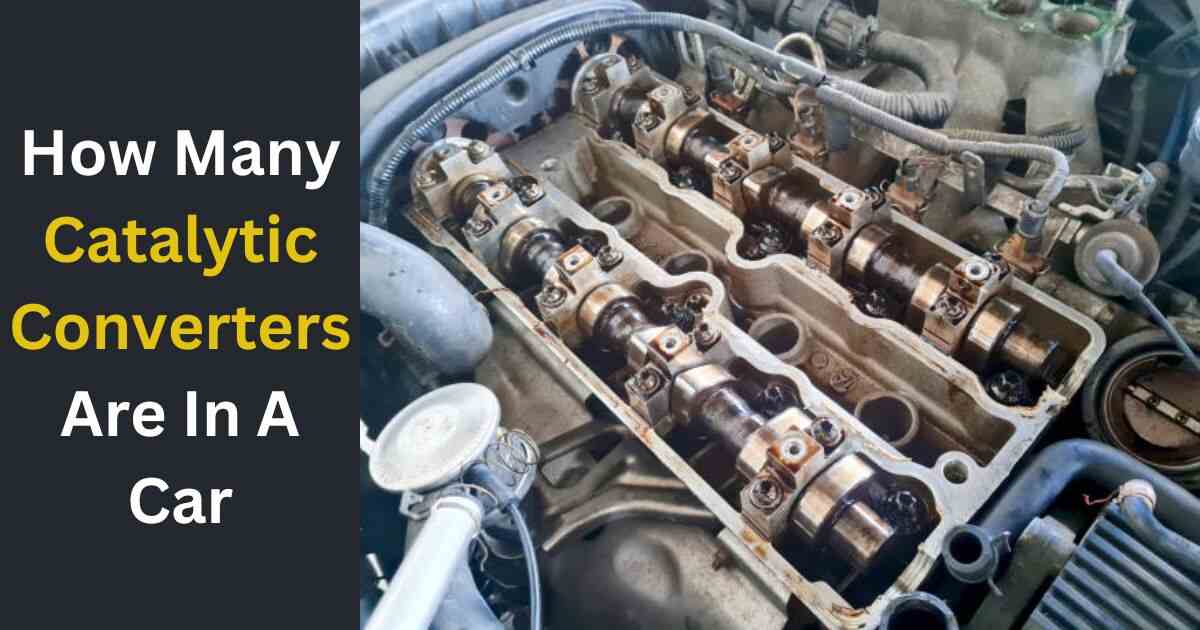How Many Catalytic Converters Are In A Car: Catalytic converters, those quiet heroes hiding under your car, are super important for keeping the air clean. But how may of these environmental helpers does a car usually have? Well, it depends on a few important things in the car world.
How Many Catalytic Converters Are In A Car
The Most Common Scenario: One Or Two Catalytic Converters
Most cars driving around these days usually have one or two catalytic converters. Here’s why:
- One Is Enough: Many cars have just one converter, and that’s usually enough to meet the rules about emissions. This is true, especially for smailer or older cars.
- Double Trouble: Some cars with two exhaust pipes, like high-performance or V-type engines, might have two converters. Having one for each pipe helps clean up the exhaust fumes better.

Why The Variation?
Why do some cars have more catalytic converters? Let’s take a closer look at why this happens:
- Big Engines Make More Mess: Bigger engines with more cylinders create more pollution. To handle all that extra dirty stuff, some cars might need an extra catalytic converter to clean things up better.
- Different Car Designs: Cars with engines placed sideways (like front-wheel-drive cars) might need an extra converter compared to cars with engine running from front to back (like rear-wheel-drive cars). This helps the car works at its best.
- Keeping Up With Rules: As the rules about how much pollution cars can make get stricter, some car makers use two catalytic converters to make sure their cars meet the newest standards. This is especially true for newer models.
The Plot Thickens: A Rare Exception
Even though it’s not usual, some super-fast cars might not have a catalytic converter. They do this to make the engine work even better for racing. But the trade-off is that these cars produce more pollution, and because of that, it’s not allowed to drive them on regular roads.
Identifying Your Car’s Converter Count
You can figure out how many catalytic converters your car has in two simple ways:
Check The Manual: Look in the book that came with your car. It has all the details about your car, including how many catalytic converters it has and where they are.
Take A Look (but be careful!): When the engine is off and cool, peek around the exhaust system. You’ll see bulbous or oval- shaped converters near the exhaust manifold. Just remember to be safe and not touch anything hot.
How Many Miles Does A Semi Truck Last
Warning Signs Of A Failing Converter
Catalytic converters are made to stay strong, but like all car parts, they can get worn out. Here are some signs that a converter might not be working well:
Check Engine Light: If this light comes on, especially if it gives a special code related to the converter, something might be up.
Bad Smell: If your car starts to smell like rotten eggs, it’s a sign that the converter might not be doing its job right.
Engine Not As Good: When a converter isn’t working well, the engine might not be as powerful, and your car might not use fuel as efficiently.
Maintaining Your Catalytic Converter
Even though catalytic converters don’t need regular check-ups, doing a few things can help them last longer:
Choose Good Fuel: Low-quality fuel can have stuff that harms the inside of the converter. Using better fuel helps keep it in good shape.
Keep The Engine Cool: Too much heat from the engine can make the converter not last as long. Make sure your cooling system is working well to avoid this.
Fix Engine Problems Fast: If your engine has problem like misfires or bad spark plugs, get them fixed quickly. Ignoring these problems can make the converter work too hard and wear out faster.
A Breath Of Fresh Air
Catalytic converters play a vital role in reducing harmful emission and ensuring cleaner air for everyone. Understanding how many your car has and keeping an eye out for warning signs is crucial for maintaining a healthy exhaust system and a cleaner environment. Remember, a well-functioning catalytic converter translates to a greener ride and peace of mind for you and the planet.





